Red Base
The red base coat is one of two primary coat colors. Over 50% of cat colors that you may want is produced from a black base coat. To learn more about how a cat inherits a black base coat, see Basic Cat Genetics.
All cats on this page will have the red base coat (Xr). If there is a specific color or coat pattern you are interested in, please refer to the Cat color and pattern codes.
Red can have many modifiers which affect the color of the kitten, including tabby, dilute, and white. The red base can also have gold, and silver modifying it. To see examples, see silver and gold.
Please Note:
Almost every color that is possible to produce in the Siberian Forest cat is listed, however, some are difficult to identify.
If we, at DevinePaws, have not produced a particular color, we have found pictures from the internet with watermarks where possible. All pictures on this site are copyright and not to be used without permission.
Tabby Modifier
When a red based kitten has the tabby gene (Agouti A Locus), it is known as a red tabby. A red tabby can be any tabby marking; mackerel (Mc), classic (mc1), ticked (ti+) or spotted. To see more information about tabby markings, see Tabby Coat Markings.
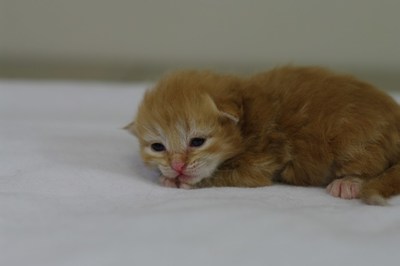

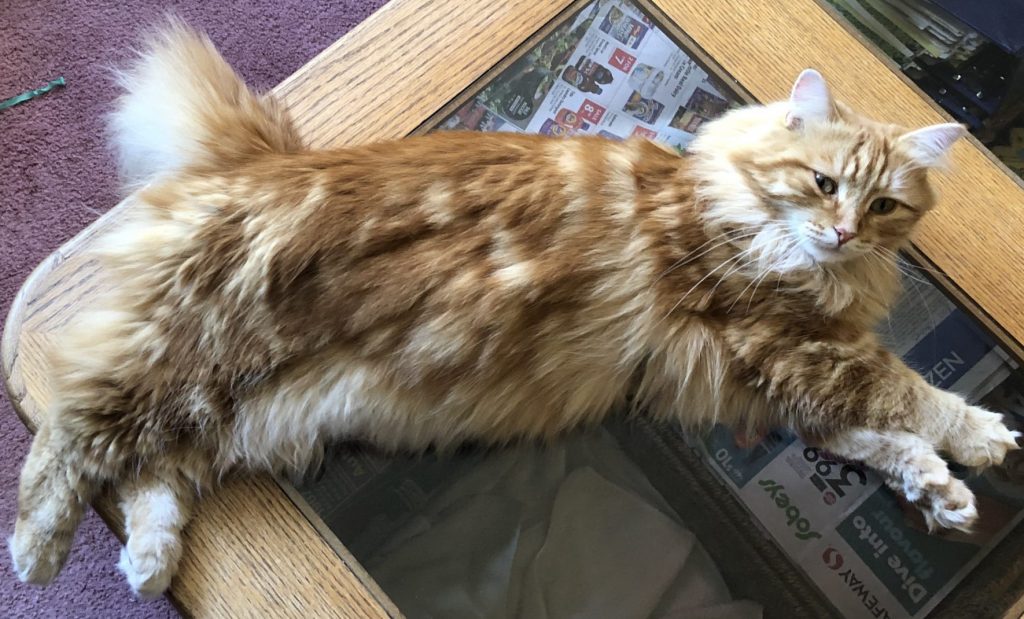
Red Classic tabby PawPeds EMS: d 22
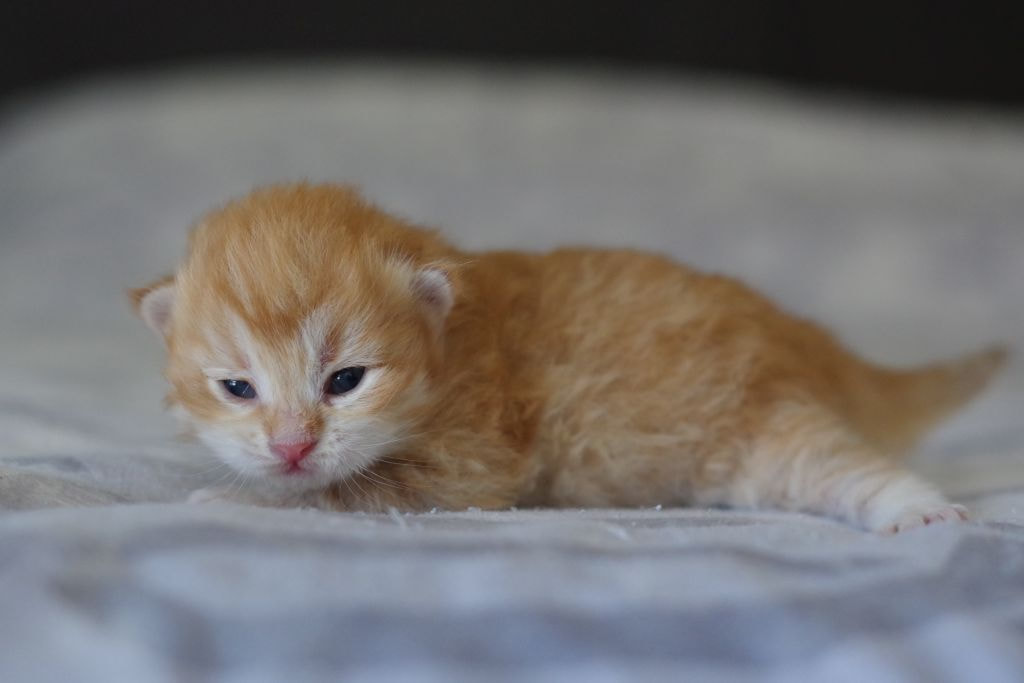


Red Mackerel tabby PawPeds EMS: d 23
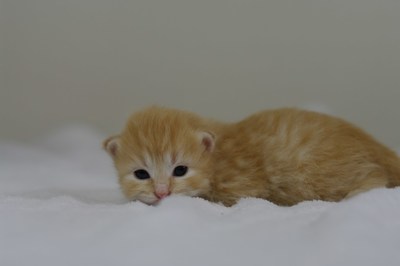

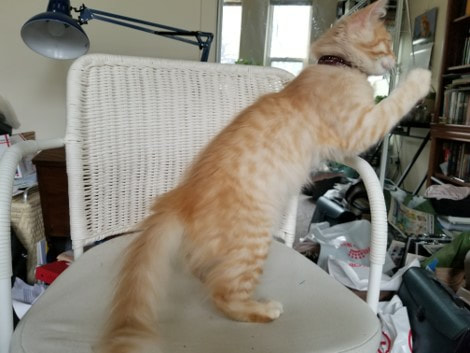
Red Spotted tabby PawPeds EMS: d 24
Cream (Dilute)
Dilute is a recessive gene. This means that your kittens parents do not need to be dilute to produce dilute kittens.
Dilute will change your kittens coloring from a dark orange color to a light orange.
Cream Tabby
A cream tabby is a red tabby with the dilute modifier

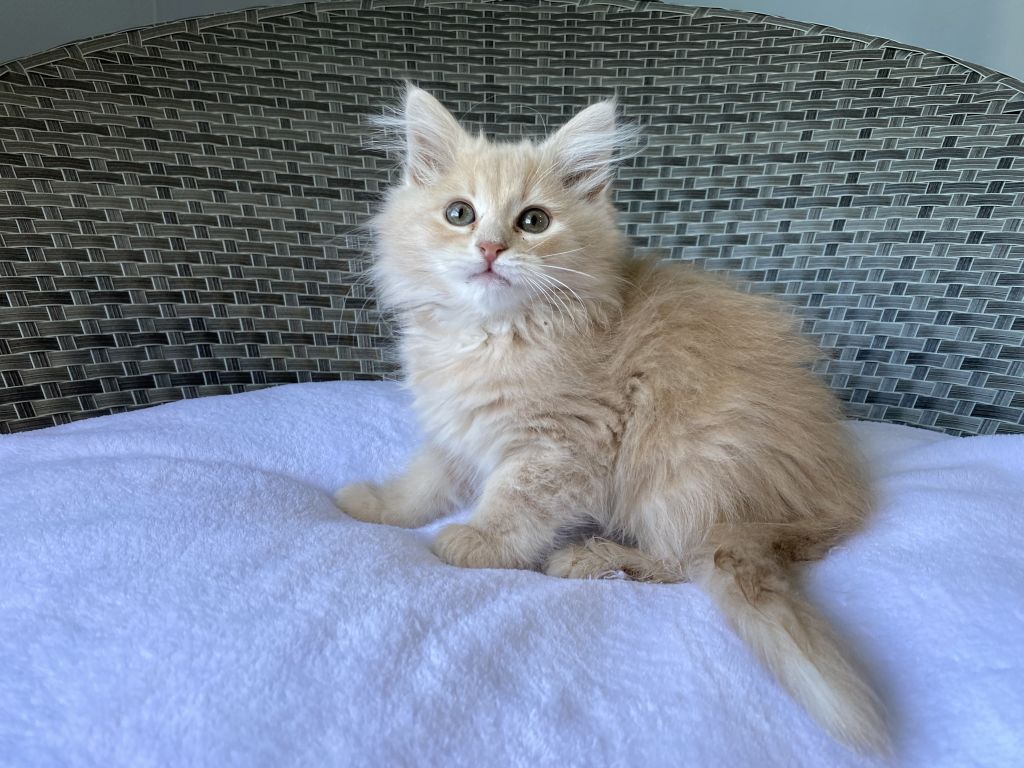

Cream classic Tabby PawPeds EMS: e 22
Cream mackerel Tabby PawPeds EMS: e 23
Cream spotted Tabby PawPeds EMS: e 24
Point (NEVA)
The NEVA gene is a recessive gene, which means that the kittens parents do not need to be NEVA to produce NEVA kittens.
Pointed kittens will appear white, except for their ears, legs and tail. Temperature can affect the cat’s white coat. So as they age, it’s not uncommon for their white coat bodies to get darker. If they are clipped down or if their environment is warm, their coats will stay white. If their environment is cold, their coat will become darker.
Flame Point
A flame point is a red kitten which has the NEVA gene.
Your kittens ears, legs and tail will appear red.
Flame Point PawPeds EMS: d 33
Flame Lynx Point
A flame lynx point is a kitten which has a red base, the tabby gene (lynx = tabby) and the NEVA gene.
Your kittens ears, legs and tail will be red, with the legs and tail often having striping.



Flame Lynx Point PawPeds EMS: d 21 33
Cream Point
A cream point is a kitten which inherited the dilute gene and the NEVA gene
Cream points can be difficult to identify as their ears, legs and tail will be a very light orange, which can often blend in to the white coloring of the NEVA gene as a kitten.
Cream Point PawPeds EMS: e 33
Cream lynx Point
A cream lynx point is a kitten which inherited the dilute gene. the tabby gene (lynx = tabby) and the NEVA gene
Cream lymx points can be difficult to identify as their ears, legs and tail will be a very light orange, which can often blend in to the white coloring of the NEVA gene as a kitten. Their legs and tail tend to have typical tabby stripes.
